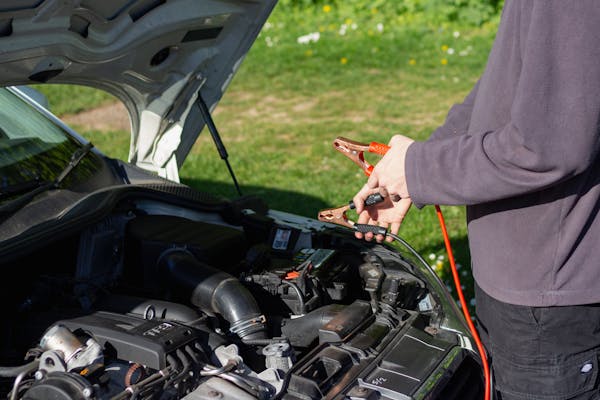Your battery needs to stay charged and free of corrosion for it to work properly. Clean the terminal clamps and battery tray regularly. Make sure the battery is securely fastened to prevent vibration damage.
Check the battery fluid levels with distilled water (if the battery has removable caps). Batteries that are too low on electrolyte can drain quickly.
Check the Battery’s Health
Keeping your battery healthy is crucial for a long lifespan. Check the voltage regularly and look for signs like dim headlights and a dashboard warning light that indicates a problem with the battery or charging system. Scrub the battery terminals to remove corrosion and keep them clean to facilitate the flow of electricity.
Turn off electronics such as the radio and the heater when your car is not in use to prevent draining the battery. Check the battery’s condition and replace it if it is cracked, leaky or swollen.
If you have a traditional flooded battery, top it off with water regularly to avoid drying up and exposing the lead plates to the sulfuric acid inside. Be sure to use distilled water to prevent contamination and do not overfill it. Avoid parasitic drain by ensuring all lights and accessories are switched off before you leave your car. Also, park in shaded areas or garages and consider installing an insulation blanket to protect the battery from extreme heat. Discover more at Car Battery Maintenance Tips.
Clean the Battery Terminals
It’s important to keep the battery terminals clean. A buildup of corrosion inhibits the flow of electricity to your car’s accessories and can cause the battery to go flat. Corrosion also creates a path for acid to leak through, which could damage the battery or other components of your vehicle’s electrical system.
You can purchase a commercial battery cleaner or simply use baking soda and water to remove corrosion from the terminals. Once you’ve removed all of the corrosion, dab a bit of petroleum jelly or other lubricant (such as Vaseline) on each terminal and then reattach.

Some batteries, such as sealed AGM types like Optima or Enertia, require very little maintenance, but older flooded-plate batteries are more likely to suffer from corrosion. It’s a good idea to disconnect and clean the battery terminals before winter. Also, you can prevent corrosion by using felt battery washers between the terminal and cable and coating the ends of the cables with a commercial protectant.
Remove Parasites
A battery provides chemical energy to turn into electrical energy that powers a vehicle’s components. However, sometimes little electrical whoopsies drain the battery, especially if the car sits unused for a long time. This is known as parasitic draw and can be difficult to trace.
Parasites are often caused by improperly installed aftermarket accessories, proximity keys or faulty wiring. These can draw power from the battery even after the ignition is turned off. In extreme cases, high parasitic draw can cause a flat battery and prevent the vehicle from starting.
To test for a parasitic battery draw, first ensure the vehicle’s lights and all accessories are powered off and disconnected. Connect a multimeter set to measure amps to the negative cable terminal and one of the probes on the meter to the battery lead. Any reading above 50 mA indicates there is a parasitic battery draw present.
Once you identify the source of the drain, you can remove fuses in sequence until you find the component that is staying on and stealing your battery’s power. Contact your local Kwik Kar to speak with an ASE-Certified technician about tracing and resolving the problem.
Install a Battery Charger
A battery charger (and a battery maintainer) can help bring a drained car battery back to life. Follow the battery charger’s instructions, ensuring the unit is designed to properly charge your specific battery type and that the voltage selector is set to match its nominal voltage (6v=6 volts, 12v=12 volts).
Use gloves and eye protection when working with batteries. They generate hydrogen gas, which can be toxic and explosive. Work in a well-ventilated area to help dissipate the gases. Always disconnect the positive battery terminal before the negative one. Connect the charger’s grounding cable to a metal part of the engine block or chassis rather than directly to the negative battery terminal.
Regularly check your car’s battery connections and terminals for looseness or corrosion. Store batteries away from extreme hot or cold temperatures. Most batteries can last longer if they are maintained in moderate weather conditions. Consider installing a thermal cover over the battery to help protect it.